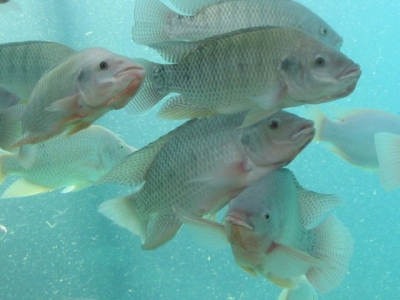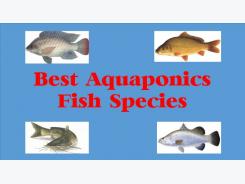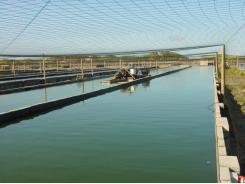The importance of digestibility enhancers in current aquafeed formulations

How adding lyso-phospholipids and bile salts to aquaculture feeds can improve the absorption efficiency of major nutrients, particularly lipids, by fish.
Global aquafeed production is following the exponential expansion of aquaculture and reached close to 40 million tonnes in 2017, with a predicted annual growth rate of 5.5 percent between 2015 and 2025 (Tacon and Metian, 2015). The increasing production volumes resulted for many aquaculture species in a continuous challenge of the farm gate prices and the profitability of the farm operation.
In addition, all major aquafeed ingredients - including fish meal, fish oil, vegetable proteins and oils, wheat flour, feed phosphates, additives, vitamins and minerals - have shown significant price fluctuations over the past years.
The increasing replacement of marine ingredients by those of vegetable origin has moderated the economic pressure on farmers and feed manufacturers and allows for a continuing supply of aquafeed that can meet the volume required for the developing industry.
Despite economic and volume considerations, feed formulations are not only about price, and the nutrient supply, absorption and utilisation from the new ingredients must be contemplated. The increasing inclusion of vegetable ingredients requires supplementation with essential nutrients such as cholesterol, omega-3 long chain polyunsaturated fatty acids (n-3 LC-PUFA), phospholipids, amino acids, and trace minerals to compensate for the nutritional gaps introduced when replacing marine ingredients.
A recent survey comparing commercial shrimp feeds manufactured in India shows that the increasing inclusion of plant ingredients between years 2014 and 2016 led to an overall reduction of 16% and 24% in the levels of n-3 LC-PUFA and cholesterol, respectively (van Halteren and Coutteau, 2017).
Moreover, plant proteins contain heat-stable anti-nutritional factors, which may induce enteritis in carnivorous fish species and ultimately have a negative impact on nutrient absorption (Krogdahl et al., 2006). Given the current trends in aquafeed formulation, it is therefore important to not only aim for optimising nutritional inputs at the lower cost but also use alternatives that maximise nutrient absorption and utilisation.
Digestibility enhancers that optimise the digestive potential give the formulator flexibility in the use of plant ingredients and formulation of least-cost and high-quality feeds.
A wide variety of concepts and products are being investigated for improving digestion and feed utilisation in livestock species. The feeding biology, digestive physiology and nutritional requirements of livestock species differ from those of aquaculture organisms.
Therefore, the direct application of digestibility enhancers in aquaculture requires prior empiric screening with the aim of identifying effective compounds for the different aquaculture species.
Furthermore, a key consideration is that these compounds must be heat-stable to facilitate the application in the mixer under practical processing conditions applied in aquafeed manufacturing. The present article describes different digestibility enhancers and illustrates the potential of their application in aquafeed to reduce cost while optimising digestive potential and growth performance.
Oils and fats are important sources of essential lipids and energy to the animal. Enhancing lipid absorption and utilisation is important to maximise the performing efficiency of the plant ingredients contained in commercial aquafeeds.
A first group of digestibility enhancers that target the lipid components of the feed is emulsifiers. Although lipids are not water soluble, lipid digestion takes place in a water environment.
Emulsifiers are surfactants that lower the tension between water and lipids, causing the lipids to be broken down into smaller droplets that can be dispersed throughout the water, and allowing more efficient digestion of triglycerides by lipases.
After digestion, emulsifiers associate with the monoglycerides resulting from digestion and free fatty acids to form micelles that transport them to the enterocyte surface for absorption.
Phospholipids are well-known emulsifiers, with lecithin likely as the most common form of phospholipids used in animal nutrition. These are composed of one hydrophilic head group, consisting of phosphate group and glycerol, and two lipophilic fatty acid tails (Figure 1). The high lipophilic characteristic of phospholipids makes them excellent emulsifiers for water-in-oil emulsions (ie limited amount of water is added to a lipid rich environment) such as production of margarines, but weak emulsifiers for the oil-in-water conditions (ie limited amount of lipids is added to a water rich environment) such as those of digestion in the gut. hus, the use of phospholipids in animal feed should be driven as source to meet animal requirements rather than as strategy to optimise lipid absorption.

Figure 1. Structure of phospholipids and lyso-phospholipids.
The structure of lyso-phospholipids, with only one fatty acid tail, makes them more hydrophilic than phospholipids, resulting in better capacity to form smaller and increased number of micelles
More efficient emulsification in the gut environment is achieved through the use of lyso-phospholipids, a derivative of phospholipids following enzymatic hydrolysis. Lyso-phospholipids contain only one fatty acid tail (Figure 1). This structure makes them more hydrophilic than phospholipids, which translates into better capacity to disperse lipids, form smaller and increased number of micelles, and consequently into better absorption.
The supplementation of the lyso-phospholipid-based Aqualyso at 0.1% and during 75 days to feed of carnivorous European seabass with only 16% fish meal and remaining as vegetable protein resulted in 5% improvement in specific growth rate (SGR %/day) and 4% reduction in feed conversion ratio (FCR) in relation to control (Figure 2).
In rainbow trout feed with 15% fish meal and 30% soybean meal protein, 0.2% inclusion of Aqualyso during 56 days improved final weight by 5% as well as SGR and FCR by 4%. Improved performance following Aqualyso supplementation was also corroborated in herbivorous Nile tilapia, in which 0.1% inclusion in juvenile commercial feed during 75 days resulted in 7% improvement in final weight and 2% improvement in SGR and FCR.

Figure 2. Improvements in growth performance parameters in carnivorous and herbivorous species following Aqualyso supplementation.
Bile salts are a second type of emulsifier. Unlike phospholipids and lyso-phospholipids, the emulsifying capacity of bile salts originates from the flat steroidal structure, with the hydrophilic hydroxyl groups on the concave side and the lipophilic methyl groups on the convex side (Sarkar et al., 2016).
The emulsification properties of bile salts are superior to phospholipids in that a high bile salt:phospholipid ratio promotes the formation of small size micelles that are more quickly transported to the enterocyte surface (Cabral and Small, 1989).
Besides lipid emulsifiers, bile salts are the major-end metabolites of cholesterol, and participate in cholesterol homeostasis and in the activation of the pancreatic lipase that enables fat hydrolysis into monoglycerides (Buchinger et al., 2014).
The inclusion of vegetable proteins, particularly soybean meal, in carnivorous fish species has been associated to reduced levels or activity of bile salts and consequently to reduced lipid digestibility (Yamamoto et al., 2007; Romarheim et al., 2008).
This has been attributed firstly to impaired bile salt reabsorption due to intestinal inflammation (Kortner et al., 2013), and secondly to a high loss due to binding to plant fibers, corroborating the fact that reduced lipid digestibility in fish fed soybean meal is not always or only associated to enteritis (Refstie et al., 2006).
Dietary supplementation of bile salts to meet the increased requirements associated with the inclusion of vegetable protein can restore or reinforce the aforementioned functions and therefore promote optimal nutrient digestion and utilization.
This was demonstrated in sea bream and rainbow trout, in which supplementation of bile salts to soy protein feeds normalized the digestive process as reflected by improvements in lipid and carbohydrate digestibilities (Takagi et al., 2002; Romarheim et al., 2008).
These improvements in nutrient digestion, particularly of lipids, make bile salts a valuable tool when aiming to reduce the lipid inclusion levels in the feed formula.
In a low temperature diet for trout, lipid reduction from 27% to 23% and supplementation of bile salts (Lipogest) reduced the cost of feed by 5% without affecting growth performance and conversion efficiencies.
In conclusion, current trends in aquafeed formulation promote the application of digestibility enhancing additives such as lyso-phospholipids and bile salts which improve the absorption efficiency of major nutrients, particularly lipids, and the increasingly limited levels of essential nutrients.
This implies the possibility of extracting more nutritional value of each kilogram of feed, and is particularly important when aiming to compensate the depressed fat utilisation derived from high plant formulations and to reduce dietary fat levels without impacting performance.
Related news
Tools

Phối trộn thức ăn chăn nuôi

Pha dung dịch thủy canh

Định mức cho tôm ăn

Phối trộn phân bón NPK

Xác định tỷ lệ tôm sống

Chuyển đổi đơn vị phân bón

Xác định công suất sục khí

Chuyển đổi đơn vị tôm

Tính diện tích nhà kính

Tính thể tích ao




 Ich (White Spot Disease) - Part 1
Ich (White Spot Disease) - Part 1  Diseased salmon debate heats up
Diseased salmon debate heats up